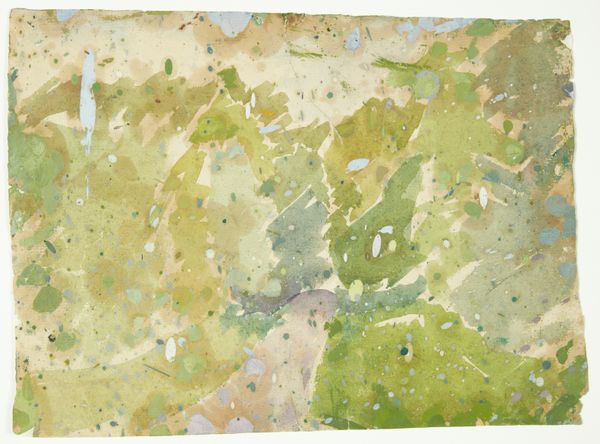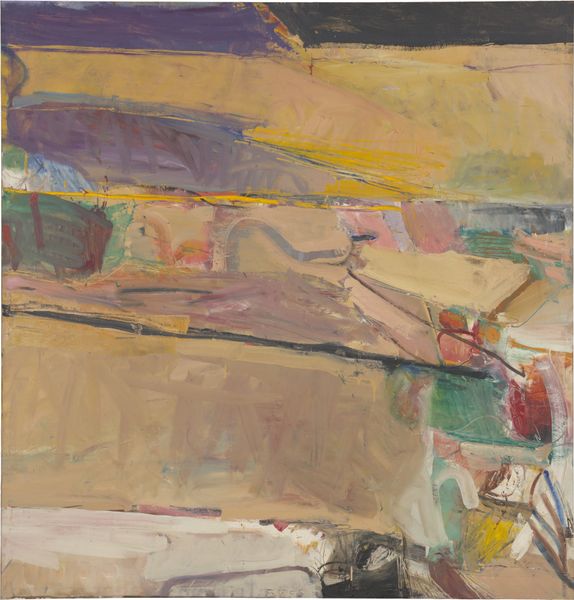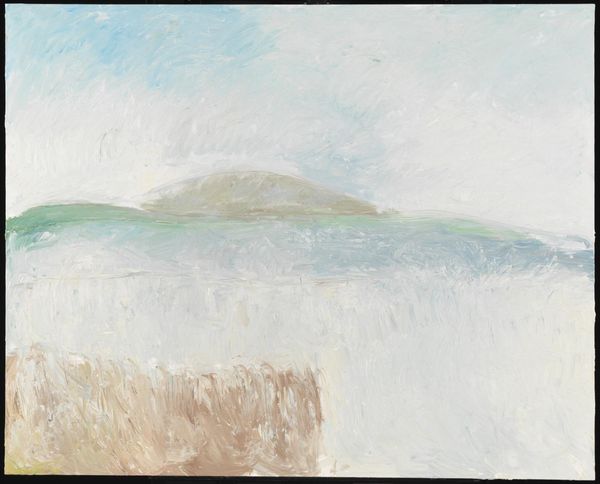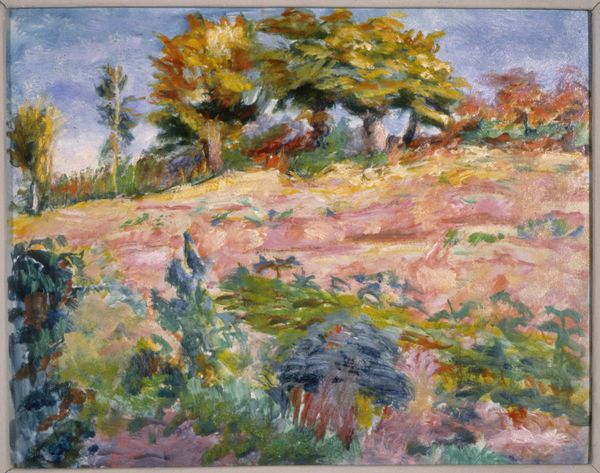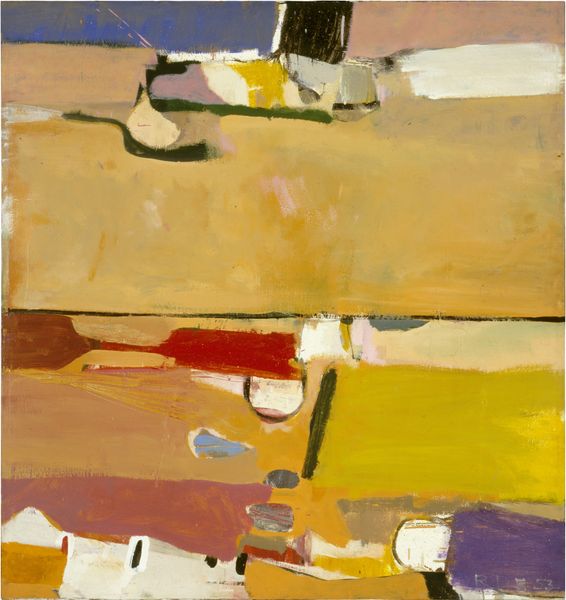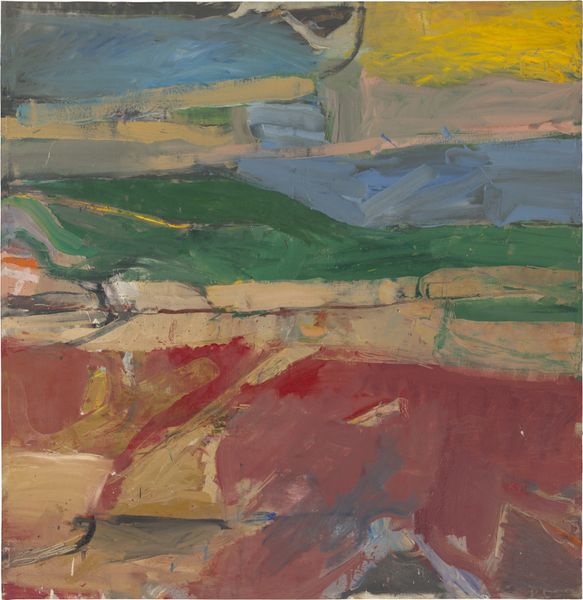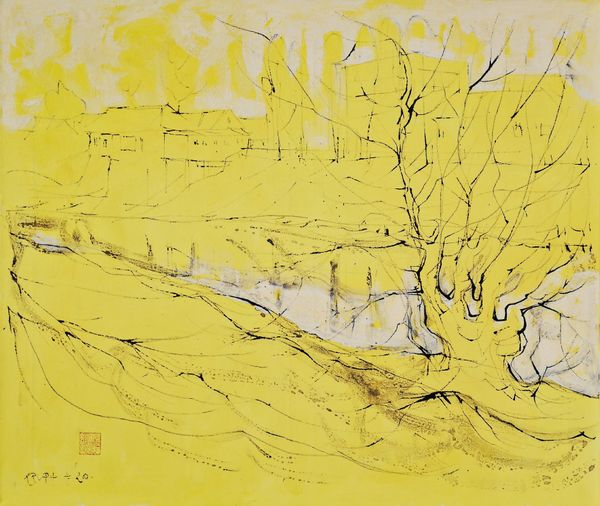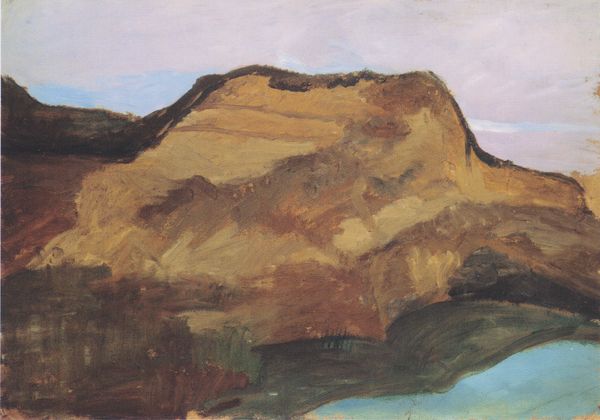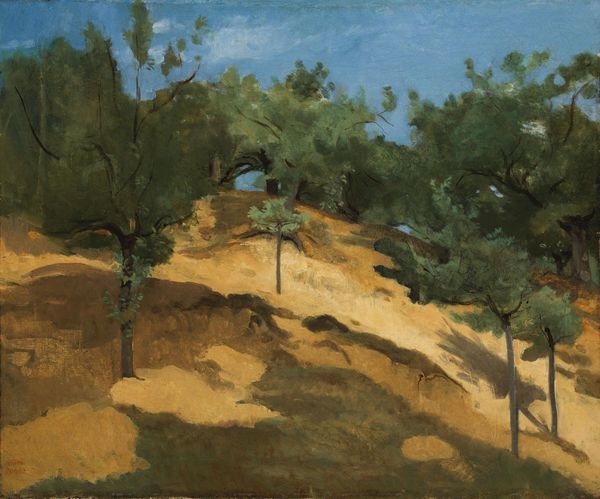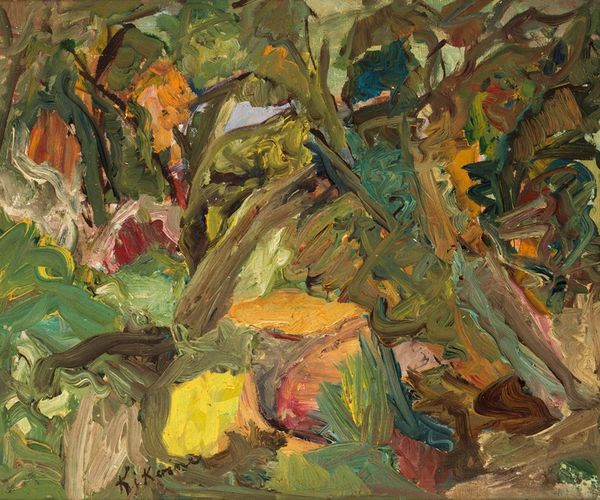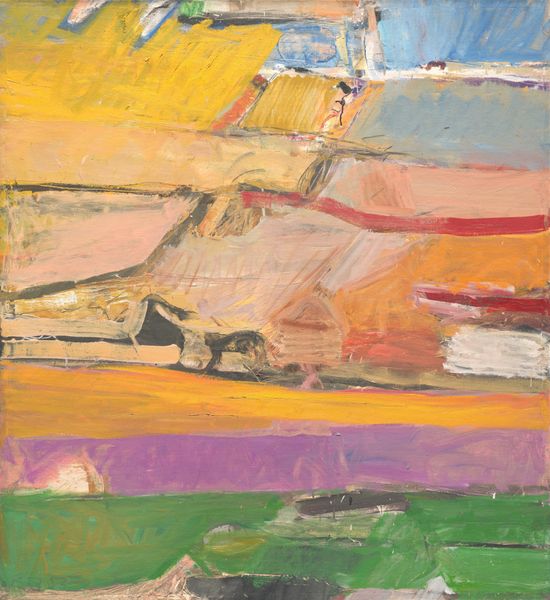
painting, plein-air, oil-paint, impasto
#
contemporary
#
painting
#
plein-air
#
oil-paint
#
landscape
#
impressionist landscape
#
impasto
#
acrylic on canvas
#
expressionism
#
expressionist
Copyright: Courtesy of the office of Rashid Al Khalifa
Curator: We're looking at Rashid Al Khalifa’s painting, "Riffa Wadi." He often paints en plein air using oil paint. Editor: The immediate impact is its sheer sun-drenched quality. The composition is dominated by warm hues and thick impasto. The sky, just a thin horizontal band, barely contains this sea of ochre. Curator: Indeed, this Wadi scene gains meaning when viewed through the lens of labor and material. Khalifa likely engaged with the physical demands of plein air, confronting the landscape directly. Considering the conditions - the desert heat, the dust - all impact the texture of the painting. Editor: Yet I can’t help but note how he harnesses those elements purely to express a feeling, an emotion. Observe the individual brushstrokes—notice their direction, their intensity. They don’t merely depict the scene, but channel raw energy. Semiotically, this speaks of intense connection to the landscape. Curator: And thinking of that landscape, one must also account for the social elements. Riffa, a once separated city in Bahrain that was known for its distinct tribes and classes of people, and Wadi meaning "valley". This depiction of an arid environment represents more than just nature; the colors invoke the resources one can find in valleys: iron and rich soil, things that people fought over for centuries. Editor: Perhaps. But focus on that limited palette, those analogous colours. The harmony is so effective! He reduces the entire landscape to its essence. This simplification forces you to contemplate not its location, but it's being: shape, light, texture and the relationships between. Curator: The physicality of that engagement, translated to canvas, embodies labor in its truest form. What seems spontaneous required immense dedication, material knowledge, and resourcefulness to achieve this sense of sun-soaked land. Editor: Ultimately, I'm still struck by its expressionist flair, the dynamism achieved through purely formal means: that tactile surface, and that audacious chromatic scheme. Curator: It's the relationship between that lived experience of material production and the final image which offers a complex interpretation of place and experience. Editor: Yes, ultimately a dialogue emerges about land, and the visual language used to express what such an idea could mean.
Comments
No comments
Be the first to comment and join the conversation on the ultimate creative platform.

